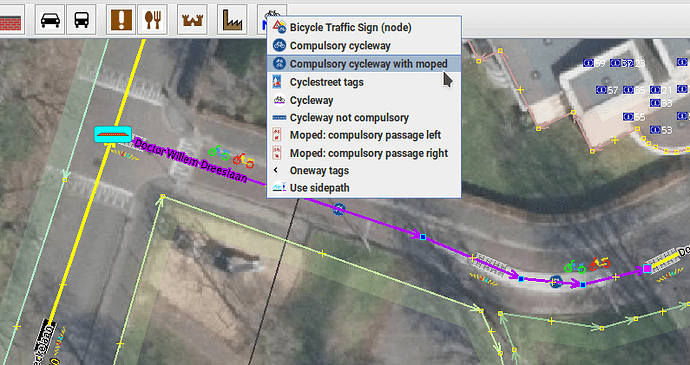The Wiki, Traffic sign IDs is clear to me, it is after Human-readable values that might obscure it a bit.
I do not see a need for human-readable values, what is needed is that things are clear to the user and precise. This is how Josm looks for me:
Source: Josm with an image background from beeldmateriaal,nl
Notice that it is clear that the cycleway is a NL:G11 without seeing “traffic_sign=NL:G11” ever. Also adding new traffic signs can be done without knowing the code ever.
For the JOSM menu, see JOSM Presets voor NL, traffic signs for ways are available through Josm Map Paint Styles and I have also the Road Extended JOSM (default) style (forum post) active.
iD offers about 5 of the documented textual values and not the ones most widely used.
Fix the tools instead of adding an additional traffic_sign:ref that will for sure trigger problem like traffic_sign:ref and traffic_sign not being in line with each other.
